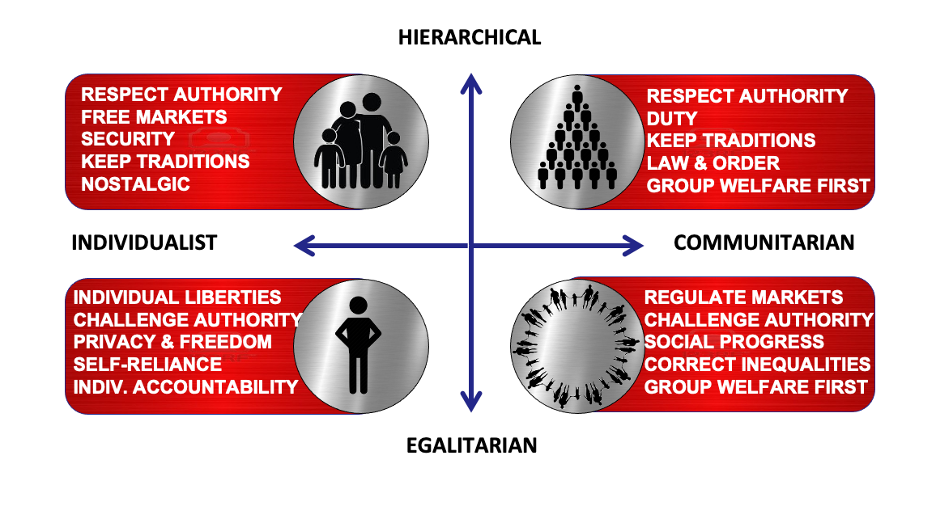
This blog is provided by the IPR Behavioral Research Insight Center.
As he always does, Chris Graves from Ogilvy’s Center for Behavioral Science, gave an inspiring, albeit brief lecture on the development of a “Sensemaking Genome” for stakeholders. No longer, admonished Graves, should we slice and dice our stakeholders by common demographics but elevate our analyses to the underlying psychological make-up of our publics.
Graves, with his global behavioral science group at Ogilvy, has developed a proprietary system to discern types. This new “genome” helps understand and target stakeholders. It is based on an integration of accepted and peer-reviewed behavioral science studies and composed of three areas: 1) personality trait science (not Myers-Briggs); 2) cognitive styles; 3) identity-linked worldviews.
For personality traits, they use the “Big Five” OCEAN factors: An individual’s level – low or high — of “openness to experience” (think King Charles vs. Sir Richard Branson), “conscientiousness” (think Ron Weasley vs. Hermione Granger), “extraversion” (think Bruce Wayne’s Batman vs Tony Stark’s Ironman), “agreeableness” (think Game of Thrones’ Cersei vs. Oprah) and “neuroticism” (think Star Wars’ Yoda vs. C3PO). They also include an array of “cognitive styles” (how one thinks) and “identity/cultural cognition” (one’s worldview tied to a social tribe) to create a “genome” of type which can better target stakeholders with more effective messaging, delivery systems, and influencers.” This pioneering approach has now won six global awards.

Credit: Chris Graves, Ogilvy
Reflecting on Graves’s content, three key points were made by the merry little panel that followed. Made up of Dr. Terry Flynn, Academic Director at McMaster-Syracuse University, Dave Scholz, Chief Strategy Officer, Leger and Director of the IPR Behavioral Insights Research Center, and myself, the discussion focused on three areas for practice and research:
1) When conducting preliminary (and ongoing) research on your stakeholders, explore the “biases” they bring to your subject matter rather than the typical demographic derivatives. Understand past experiences, influences, leanings (political and otherwise) so that barriers and affinities toward behavior change can be more precisely targeted.
2) Become an aficionado of behavioral science theory and apply them to your strategies from the start. For instance:
o If a “structural” bias is poverty which restricts transportation, then planning events where stakeholders must come to you rather than you going to them would alter tactics, messaging, and more. https://publicwise.org/publication/social-structural-barriers-to-voting/
o If a “psychological” bias is a past history of distrust of your subject for a variety of reasons, then breaking down behavior change into small, digestible bites that are encouraged by trusted influencers and communities might be more effective. https://www.ncbi.nlm.nih.gov/pmc/articles/PMC7808310/
3) Build programs with the goal of changing behavior rather than creating awareness, modifying opinions or attitudes. This single shift can lead to big results as behaviors are much easier to measure as results (or lack thereof) are easier to see. Start with small goals (think about a continuum of small behavior changes that can lead to bigger changes later) and work on those. Then as you see results — or don’t and therefore need to apply different behavioral insights — you will increase your expertise. (Note: truly this is something we are doing every day with our families, colleagues, and staff, you just may not realize it!)

Stacey Smith is Senior Counsel and Partner at Jackson, Jackson & Wagner. She is also a longtime member of the IPR Behavioral Insights Research Center and the Commission on PR Education (CPRE).



